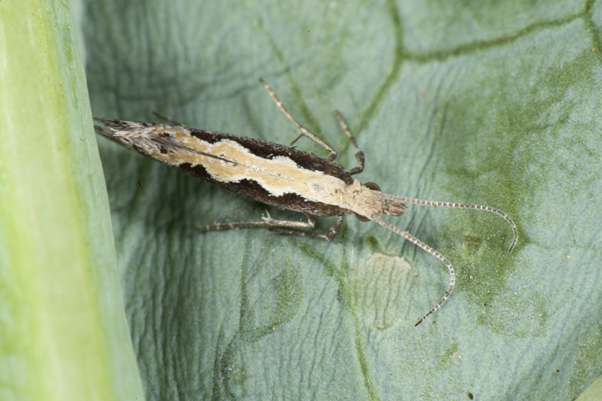The 2024 GRDC Grains Research Updates, held at the Perth Convention Centre on February 26 and 27, showcased the latest research and results from across the grains industry.
Several Crop Protection researchers from the Department of Primary Industries and Regional Development (DPIRD) were among the industry experts presenting on a variety of topical issues.
In this issue of Protecting WA Crops we spotlight the presentation delivered by DPIRD entomologist Dr Dustin Severtson.
Lessons learned from 5 years of monitoring diamondback moths and larvae across the five port zones of WA
At a glance:
- The presence of pre-season Brassica weeds, especially wild radish and self-sown canola, led to increased diamondback moths (Plutella xylostella, DBM) in nearby canola crops across the WA port zones.
- The number of DBM moths caught in pheromone traps, although somewhat variable, was generally a good predictor of subsequent larval infestations, particularly for the Geraldton port zone in August, and Esperance port zone in September.
The diamond back moth is a major pest of canola crops in winter and spring across Australia. The small yellow-green caterpillar larvae of DBM chew on the leaves, buds, flowers and pods of canola, causing yield loss in some years with larger populations. The adult moths are 10mm long and grey-brown in colour with a white stripe of uneven width down its back. When at rest and the wings are folded over the body the stripe forms three diamond shapes, hence the name ‘diamond back’.
Infestations of DBM in canola crops can be sporadic and unpredictable, and pre-emptive spraying for this pest is neither effective nor cost-effective. Therefore, monitoring for DBM is essential for effective pest management.
DPIRD entomologist, Dr Dustin Severtson has been leading a project, with co-investment from the Grains Research and Development Corporation (GRDC), investigating the role that a Brassica green bridge can have on DBM presence and its impact on winter/spring DBM populations in canola crops. DBM were also monitored throughout the season to determine if there was a correlation between moths caught in traps and larvae detected in canola crops.
During the growing seasons of 2019-2023, monitoring revealed a statistically significant relationship between moth counts at canola focus sites and presence of nearby Brassica green bridge. This impact was particularly pronounced in the Esperance port zone, regardless of whether DBM was found in the green bridge, and in the Geraldton port zone with nearby green bridge where DBM was detected. In seasons where the green bridge was widespread, DBM presence was also more widespread and not as localised as other years when summer rainfall was more isolated.
The presence of larvae in a crop was reliably predicted by the numbers of moths found in pheromone traps two weeks before, with higher numbers of moths on traps being more reliable. This relationship, robust across different regions, is particularly pronounced in August for the Geraldton port zone and September for the Esperance port zone. This early warning system is a valuable prompt for growers to monitor their own canola crops, assess whether they have threshold numbers of larvae and subsequently take measures to control this pest if needed.
For more information on Diamondback moths refer to DPIRD Diagnosing Diamondback moth webpage or Grains Research and Development (GRDC) Factsheet Diamondback moth is a sporadic but serious canola challenge.


